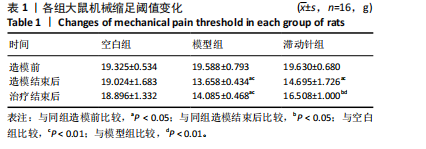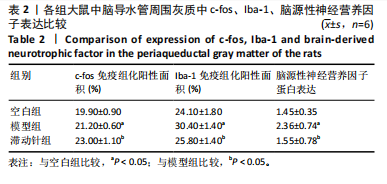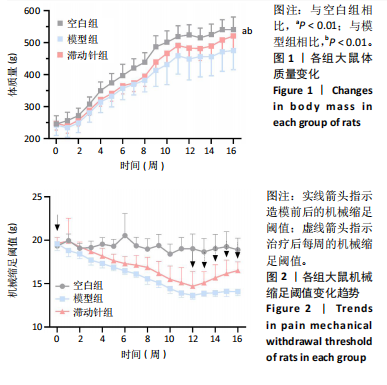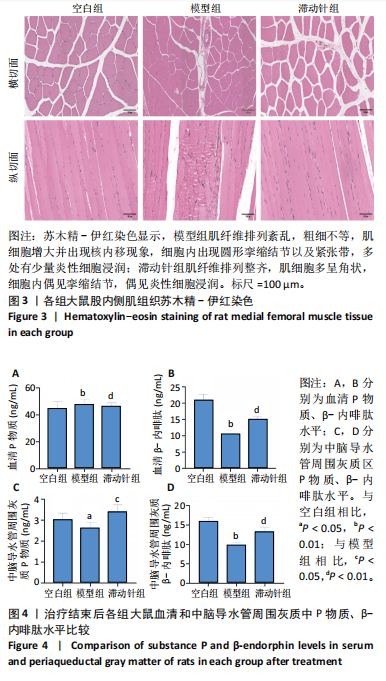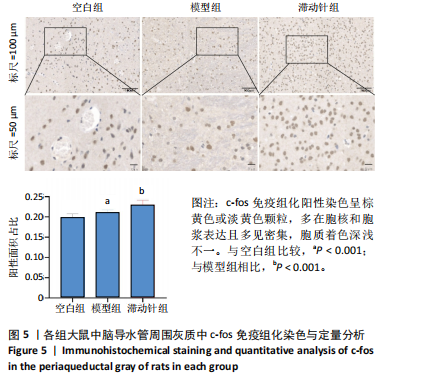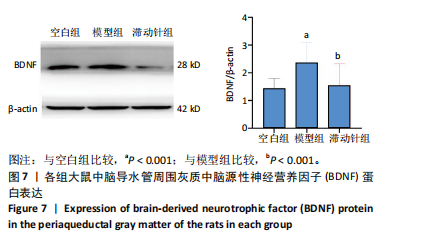[1] PROVENZANO DA, KAMAL KM, GIANNETTI V. Evaluation of Primary Care Physician Chronic Pain Management Practice Patterns. Pain Physician. 2018;21(6):E593-E602.
[2] STRACCIOLINI A, CASCIANO R, LEVEY FRIEDMAN H, et al. Pediatric sports injuries: a comparison of males versus females. Am J Sports Med. 2014;42(4):965-972.
[3] SAXENA A, CHANSORIA M, TOMAR G, et al. Myofascial pain syndrome: an overview. J Pain Palliat Care Pharmacother. 2015;29(1):16-21.
[4] DUARTE FCK, WEST DWD, LINDE LD, et al. Re-Examining Myofascial Pain Syndrome: Toward Biomarker Development and Mechanism-Based Diagnostic Criteria. Curr Rheumatol Rep. 2021;23(8):69.
[5] CAO QW, PENG BG, WANG L, et al. Expert consensus on the diagnosis and treatment of myofascial pain syndrome. World J Clin Cases. 2021;9(9):2077-2089.
[6] NIRAJ G. Pathophysiology and Management of Abdominal Myofascial Pain Syndrome (AMPS): A Three-Year Prospective Audit of a Management Pathway in 120 Patients. Pain Med. 2018;19(11):2256-2266.
[7] 宋赣军.肌筋膜扳机点所致疼痛静息态脑血流与功能连接强度的耦合研究[D]. 遵义:遵义医科大学,2020.
[8] NIDDAM DM, CHAN RC, LEE SH, et al. Central modulation of pain evoked from myofascial trigger point. Clin J Pain. 2007;23(5):440-118.
[9] 李振全.滞动针刺疗法[C].中国针灸学会第九届全国中青年针灸推拿学术研讨会,中国上海,2010.
[10] 王健,张卫华.张卫华教授“滞动针疗法”治疗慢性躯体疼痛临床特色撷英[J].中医药导报,2022, 28(10):105-109.
[11] 王雄将,唐宏亮,王开龙,等.基于枢经理论运用滞针术治疗腰臀肌筋膜疼痛综合征疗效观察[J].山西中医,2020,36(7):30-32.
[12] 唐宏亮,王雄将,方芳,等.督脉滞针疗法治疗腰背肌筋膜疼痛综合征的随机对照研究[J].辽宁中医杂志,2018,45(11):2409-2412.
[13] 王晓琳.P物质参与小鼠中枢内源性下行抑制系统镇痛效应的形态学研究[D].西安:第四军医大学,2007.
[14] TAKEDA K, MURAMATSU M, CHIKUMA T, et al. Effect of memantine on the levels of neuropeptides and microglial cells in the brain regions of rats with neuropathic pain. J Mol Neurosci. 2009;39(3):380-390.
[15] WEI F, GUO W, ZOU S, et al. Supraspinal glial-neuronal interactions contribute to descending pain facilitation. J Neurosci. 2008;28(42): 10482-10495.
[16] DEUMENS R, STEYAERT A, FORGET P, et al. Prevention of chronic postoperative pain: cellular, molecular, and clinical insights for mechanism- based treatment approaches. Prog Neurobiol. 2013;104:1-37.
[17] ZHAO H, ALAM A, CHEN Q, et al. The role of microglia in the pathobiology of neuropathic pain development: what do we know? Br J Anaesth. 2017;118(4):504-516.
[18] LI L, HUANG Q, BARBERO M, et al. Proteins and Signaling Pathways Response to Dry Needling Combined with Static Stretching Treatment for Chronic Myofascial Pain in a RAT Model: An Explorative Proteomic Study. Int J Mol Sci. 2019;20(3):564.
[19] LIU QG, LIU L, HUANG QM, et al. Decreased Spontaneous Electrical Activity and Acetylcholine at Myofascial Trigger Spots after Dry Needling Treatment: A Pilot Study. Evid Based Complement Alternat Med. 2017:2017:3938191.
[20] ZHANG H, LÜ JJ, HUANG QM, et al. Histopathological nature of myofascial trigger points at different stages of recovery from injury in a rat model. Acupunct Med. 2017;35(6):445-451.
[21] YALCIN I, BOHREN Y, WALTISPERGER E, et al. A time-dependent history of mood disorders in a murine model of neuropathic pain. Biol Psychiatry. 2011;70(10):946-953.
[22] HU ML, ZHOU FY, LIU JJ, et al. Electroacupuncture Inhibits the Activation of p38MAPK in the Central Descending Facilitatory Pathway in Rats with Inflammatory Pain. Evid Based Complement Alternat Med. 2017;2017:7531060.
[23] BIBER K, TSUDA M, TOZAKI-SAITOH H, et al. Neuronal CCL21 up-regulates microglia P2X4 expression and initiates neuropathic pain development. EMBO J. 2011;30(9):1864-1873.
[24] WATSON C. The Rat Brain in Stereotaxic Coordinates-The New Coronal Set. Academic press, 2004.
[25] HSIEH YL, WU BT, YANG CC. Increased substance P-like immunoreactivities in parabrachial and amygdaloid nuclei in a rat model with masticatory myofascial pain. Exp Brain Res. 2020;238(12):2845-2855.
[26] MARGALEF R, SISQUELLA M, BOSQUE M, et al. Experimental myofascial trigger point creation in rodents. J Appl Physiol (1985). 2019;126(1): 160-169.
[27] HUANG QM, YE G, ZHAO ZY, et al. Myoelectrical activity and muscle morphology in a rat model of myofascial trigger points induced by blunt trauma to the vastus medialis. Acupunct Med. 2013;31(1):65-73.
[28] JAFRI MS. Mechanisms of Myofascial Pain. Int Sch Res Notices. 2014; 2014:523924.
[29] 陈晨,张义,郭长青,等.针刀干预对大鼠股内侧肌触发点肌组织内P物质和降钙素基因相关肽表达的影响 [J].针灸临床杂志, 2018,34(1):55-58,81.
[30] HENRY JL. Future basic science directions into mechanisms of neuropathic pain. J Orofac Pain. 2004;18(4):306-310.
[31] WU ZZ, GUAN BC, LI ZW, et al. Sustained potentiation by substance P of NMDA-activated current in rat primary sensory neurons. Brain Res. 2004;1010(1-2):117-126.
[32] HSIEH YL, HONG CZ, CHOU LW, et al. Fluence-dependent effects of low-level laser therapy in myofascial trigger spots on modulation of biochemicals associated with pain in a rabbit model. Lasers Med Sci. 2015;30(1):209-216.
[33] 李玉娥,邓晓燕,褚万琼.针刺滞针疗法加闪罐治疗背肌筋膜炎的疗效观察[J].湖北中医学院学报, 2007,9(3): 62.
[34] 张广防,彭雄强,郭玲崧,等.浮针治疗颈肩部肌筋膜疼痛综合征应用效果、肌张力指标及超声弹性成像指标的研究[J].针灸临床杂志,2021,37(10):33-38.
[35] HSIEH YL, HONG CZ, LIU SY, et al. Acupuncture at distant myofascial trigger spots enhances endogenous opioids in rabbits: a possible mechanism for managing myofascial pain. Acupunct Med. 2016;34(4): 302-309.
[36] 李振全.滞动针疗法[M].北京:中国中医药出版社,2016.
[37] MENSE S. Pathophysiologic Basis of Muscle Pain Syndromes: An Update. Phys Med Rehabil Clin N Am. 1997;8(1):23-53.
[38] CHU J, TAKEHARA I, LI TC, et al. Electrical twitch obtaining intramuscular stimulation (ETOIMS) for myofascial pain syndrome in a football player. Br J Sports Med. 2004;38(5):E25.
[39] 徐安乐.肌筋膜触发点疼痛与脊髓中枢P物质和突触素关系探究[D].上海:上海体育学院,2019.
[40] 谢尊艳.筋膜刀干预对肌筋膜疼痛触发点模型大鼠SP、5-HT、BK影响的研究[D].西安:西安体育学院,2022.
[41] BAGLEY EE, INGRAM SL. Endogenous opioid peptides in the descending pain modulatory circuit. Neuropharmacology. 2020;173:108131.
[42] KULLING P, SIEGFRIED B, FRISCHKNECHT HR, et al. Beta-endorphin-like immunoreactivity levels in the hypothalamus, the periaqueductal grey and the pituitary of the DBA mouse: determination by ELISA and relationship to nociception. Physiol Behav. 1989;46(1):25-28.
[43] NAKAMURA T, TOMIDA M, YAMAMOTO T, et al. The endogenous opioids related with antinociceptive effects induced by electrical stimulation into the amygdala. Open Dent J. 2013;7:27-35.
[44] 任晓暄,郭孟玮,赵雅芳,等.电针对大鼠类痛经痛反应、脊髓κ-受体表达及中脑导水管周围灰质脑啡肽和β-内啡肽含量的影响[J].针刺研究,2012,37(1):1-7.
[45] WANG SJ, ZHANG YP, CANDIOTTI KA. Effects of electroacupuncture on pain sensation in a rat model of hyperalgesia with nicotine dependence. Neural Regen Res. 2022;17(4):905-910.
[46] 周倩文.针刺对偏头痛CGRP、β-EP、5-HT、c-fos含量影响及相关机制研究[D].镇江:江苏大学,2018.
[47] WU X, ZHANG M, HUANG H. Effect of qilongtoutong granule on calcitonin gene-related peptide, beta-endorphin, serotonin, dopamine, and noradrenalin in migraine model rats and mice. J Tradit Chin Med. 2014;34(2):188-193.
[48] CRUZ-MENDOZA F, JAUREGUI-HUERTA F, AGUILAR-DELGADILLO A, et al. Immediate Early Gene c-fos in the Brain: Focus on Glial Cells. Brain Sci. 2022;12(6):687.
[49] VALVERDE-NAVARRO AA, OLUCHA FE, GARCIA-VERDUGO JM, et al. Distribution of basal-expressed c-fos-like immunoreactive cells of the periaqueductal grey matter of the rat. Neuroreport. 1996;7(15-17): 2749-2752.
[50] LI H, ZHANG X, CHEN M, et al. Dexmedetomidine inhibits inflammation in microglia cells under stimulation of LPS and ATP by c-Fos/NLRP3/caspase-1 cascades. EXCLI J. 2018;17: 302-311.
[51] 郁晓燕,倪衡建,高永静.外周炎症性疼痛刺激诱导大鼠中脑导水管周围灰质胶质细胞激活及细胞因子的表达[J].解剖学报, 2008,39(4):460-465.
[52] 王列.针刺“激痛点”对肌筋膜疼痛综合征大鼠疼痛敏化调控的机制研究[D].沈阳:辽宁中医药大学,2020.
[53] 马俊杰.针刺、艾灸对肌筋膜疼痛综合征大鼠IL-8、PGE2及脊髓OX-42、BDNF表达影响的对比研究[D].沈阳:辽宁中医药大学,2022.
[54] 肖蕾,潘洁,高育龙,等.基于“肌骨调衡”学术思想行滞动针疗法治疗风寒痹阻型神经根型颈椎病 [J].颈腰痛杂志,2024,45(1):145149.
[55] 肖蕾,潘洁,高育龙,等.滞针动态施治疗法治疗神经根型颈椎病风寒痹阻证的随机对照试验[J]. 中医药导报,2023,29(10):50-55,59.
[56] 吴丹卉,陈晓琴.滞动针法的相关文献研究与思考[J].江西中医药, 2023,54(5):62-64.
[57] LANGEVIN HM, CHURCHILL DL, WUJ, et al. Evidence of connective tissue involvement in acupuncture. FASEB J. 2002;16(8):872-874. |
